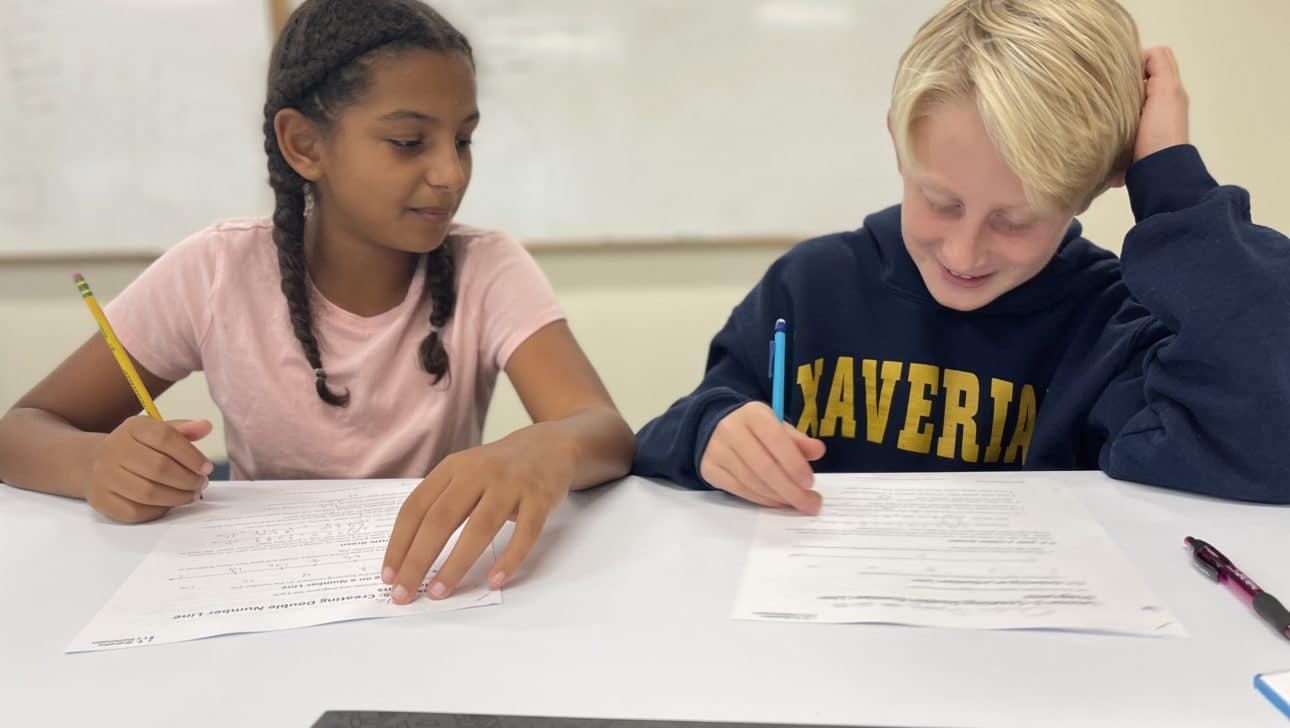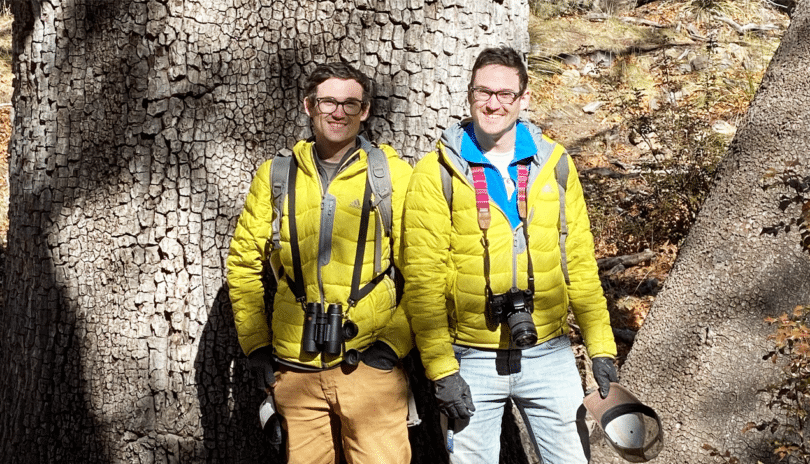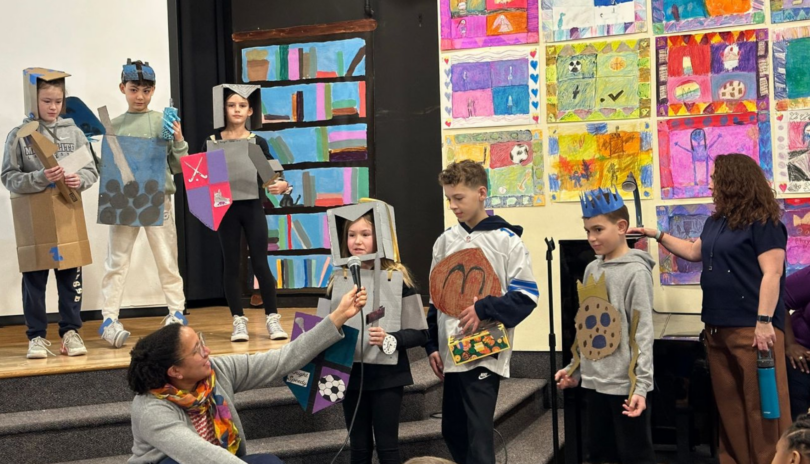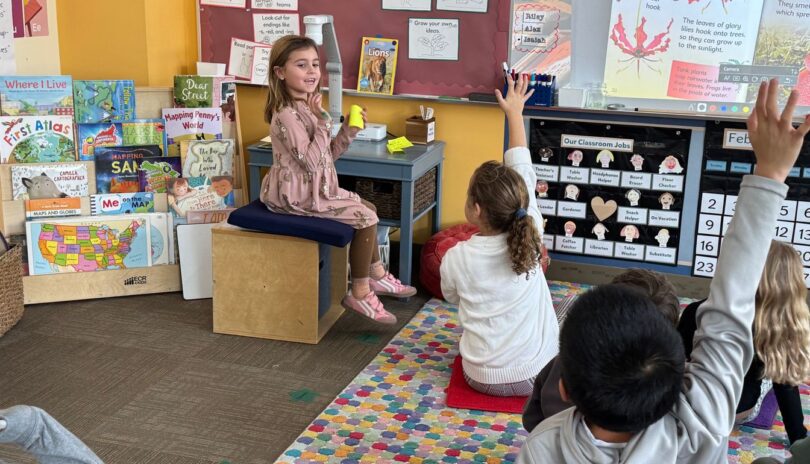In DCD’s math classes, students practice problem solving, and explore how to approach certain problems with particular methods. These tactics were on display in Ms. Soutsos’s recent hands-on ratios lesson.
The class began as Ms. Soutsos handed out math packets and instructed her 6th graders to work in pairs to solve basic ratios equations. In the first question, students were tasked with determining how much yellow water to mix with only 1 ml of blue water to make a small batch of green water. After giving everyone time to work on the problem independently, Ms. Soutsous then brought the discussion back to the group, and the class put their heads together.
After exploring different answers that students came up with, the group began to examine the broader concept of ratios themselves, represented in an everyday concept. Ms. Soutsos asked: “Can anyone explain what ‘per’ refers to? Why do we say miles per hour?”
One student answered, “per is saying miles in each hour.” Another specified further that per refers to how many miles in one hour. Ms. Soutsos confirmed, “When we talk about ‘per’ we’re talking about the ratio as it relates to 1.”
In these sorts of math experiences, DCD students and teachers aren’t just concerned with getting the correct answer. “How” and “why” questions focus on the journey, rather than the end result itself, teaching analytic skills that are necessary to help students grow. Within this lesson, Ms. Soutsos offered space for students to think and apply new concepts, while standing by to offer guidance and help everyone arrive at the correct answer themselves. This empowers students to rely on their abilities, while simultaneously encouraging them to advocate for help when they need it. This approach fosters the natural curiosity of DCD students, and helps prepare them to face any challenge in the classroom and in the wider world.







